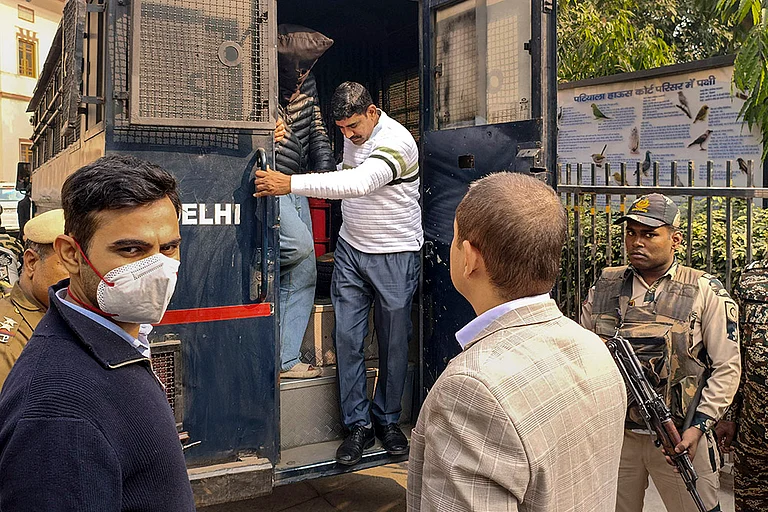In motorsport, split-second decisions can change the outcome of an entire race. Whether it's choosing when to pit, managing tire wear, or adjusting fuel usage, every move counts. Behind the scenes, one of the most powerful tools guiding these decisions is telemetry, a system that collects and transmits data from the car to the team in real time.
It might sound technical, but at its core, telemetry is simply information flowing live from the car to engineers who are watching every detail from the pit wall. And in modern racing, that stream of data has become the heartbeat of a team's strategy.
What Is Telemetry?
Telemetry is the remote collection and transmission of data. In motorsport, sensors installed across different parts of the car gather a wide range of information, such as engine temperature, throttle position, brake pressure, tire performance, fuel consumption, and much more. This data is then transmitted wirelessly to the pit crew and engineers in real time.
Every Formula 1 car, for example, has hundreds of sensors and can send up to 1,000 data points per second. That information doesn't just stay at the racetrack either. It's often transmitted back to team headquarters, where more engineers monitor and analyse it live.
Real-Time Strategy, Driven by Data
Imagine this: your driver is halfway through a race. The tires are starting to degrade, but they still feel grippy. The track temperature is rising. Another car is closing in fast. Do you pit now or wait a few more laps?
Without telemetry, this would be a gut call. With telemetry, it's an informed decision.
Engineers can see in real time how quickly the tire temperatures are rising, how much grip is left, and how fuel usage is affecting the car’s weight. They can calculate whether an early pit stop might offer a time advantage or if staying out longer could risk losing pace.
This is where data meets instinct. The driver focuses on the feel of the car, while the engineers translate numbers into tactics.
Helping the Driver, Not Distracting Them
Interestingly, drivers don't see all of this data during the race. They're given key updates, like fuel targets or tire wear, but not an overload of information. Their job is to drive. The pit wall manages the rest.
But telemetry also helps drivers indirectly. For example, if the data shows that a driver is braking slightly earlier than their teammate in certain corners, they can be advised to adjust their braking point in the next lap. It’s like having a real-time performance coach whispering in your ear, without breaking your focus.
Pit Stops and Tire Strategy
Telemetry plays a massive role in pit stop timing. Engineers monitor tire degradation in real time. The car may still be moving fast, but the sensors might show that the grip is about to drop off—a "cliff" moment. Teams aim to pit just before that happens.
Fuel levels are tracked closely, too. If there's a late-race safety car, teams can quickly adjust fuel strategies to push harder in the final laps. Without real-time telemetry, this kind of dynamic decision-making wouldn’t be possible.
Spotting Problems Before They Happen
One of telemetry’s biggest advantages is predictive analysis. If a part of the car, say, the rear brakes, is heating up too much, the data will show it well before the driver feels it. Engineers can alert the driver to manage braking in certain corners to avoid failure.
Sometimes, telemetry helps prevent race-ending issues. In 2020, during the British Grand Prix, engineers at Mercedes noticed tire vibration and internal pressure drop in Lewis Hamilton’s car. Within seconds, they warned him, but the tire still failed with only one lap to go. Had it failed earlier, the race could have ended differently. That’s how close the margins are.
Improving Performance Off the Track
The use of telemetry doesn't stop after the race ends. All the data is stored and analysed to improve performance. Engineers look at what worked and what didn’t—how the car responded to tire compounds, how fuel strategy played out, and where the driver could have gained time.
Simulators back at the factory use this data to recreate race conditions. Drivers use it to train and fine-tune their skills. It’s a constant loop: data leads to insight, which leads to improvement.
Beyond Formula 1
While F1 has led the way in telemetry technology, it's now widely used across motorsports, IndyCar, MotoGP, endurance racing, and even electric series like Formula E. Each category uses it slightly differently, but the goal is the same: better decision-making, higher performance, and smarter racing.
In Formula E, for instance, managing battery usage and regenerative braking is key. Telemetry helps balance speed with energy efficiency, lap by lap. In endurance racing, it helps monitor long-term component wear over hours of racing.
The Human Touch Still Matters
Despite all this data, motorsport is not just about numbers. The final decisions still come down to human judgment. Telemetry gives teams a detailed picture, but interpreting it correctly and reacting under pressure, that’s where experience and intuition come in.
Drivers and engineers must trust each other. The best teams are those where data and human insight work together. No matter how smart the system, it's only as good as the people using it.
The Future of Racing, Powered by Telemetry
As technology evolves, telemetry will become even more advanced. With the help of artificial intelligence and machine learning, teams will be able to predict race outcomes, weather patterns, and car behaviour with greater accuracy.
But even with all these tools, one thing remains unchanged: racing is about pushing limits. Telemetry simply helps teams know exactly where those limits are.
In a world where milliseconds matter, real-time data is more than a tool; it’s a lifeline. It powers decisions, protects drivers, and gives teams the edge they need to win. And as long as motorsport exists, telemetry will be right there, quietly guiding every move from the shadows.


























